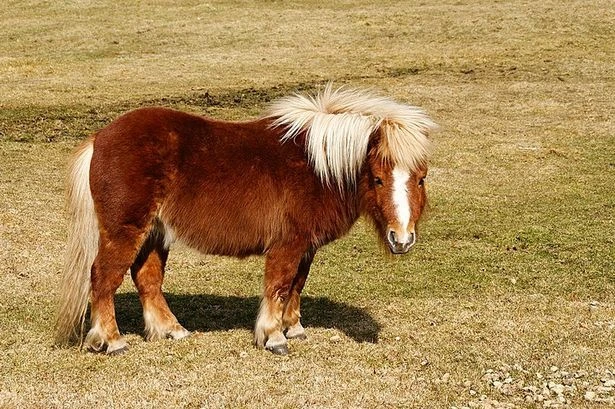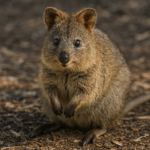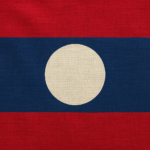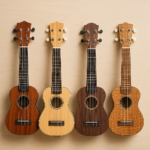
Ponies may be small in stature, but they carry a world of fascinating traits, history, and records that make them truly remarkable. From ancient breeds that have roamed wild for thousands of years to modern-day stars of equestrian sports and therapy programs, ponies have played diverse roles across cultures and centuries. In this blog, we dive into 25 unique and verified numerical facts about ponies — exploring their measurements, lifespans, world records, and surprising capabilities. Whether you’re a pony enthusiast, a researcher, or simply curious about these intelligent and resilient animals, you’ll find plenty to marvel at in the details that follow.
1. Ponies are defined as equines under 14.2 hands tall — 58 inches or 147 cm
Ponies are not simply small horses; they are a distinct classification within the equine family. The defining characteristic of a pony is its height: any equine measuring less than 14.2 hands at the withers (the highest point of the shoulders) is officially considered a pony. One hand equals 4 inches, so 14.2 hands translates to 58 inches or 147 centimeters. This measurement is taken while the animal is standing on level ground, without shoes. Ponies also differ from horses in build, often having shorter legs, thicker necks, and broader bodies. This height-based classification is recognized by equestrian organizations worldwide, including the Fédération Équestre Internationale (FEI) and the United States Equestrian Federation (USEF).
2. The smallest pony breed is the Falabella — 8 hands (32 inches or 81 cm)
The Falabella pony, originating from Argentina, holds the record as the smallest pony breed in the world. These miniature ponies typically stand at just 8 hands, which equals 32 inches or 81 centimeters tall. Despite their tiny stature, Falabellas are proportionally built like full-sized horses and are known for their gentle temperament and intelligence. They were developed in the mid-19th century by the Falabella family, who selectively bred small horses to create this unique breed. Falabellas are often kept as companion animals and can be trained for light driving or agility tasks. Their small size makes them ideal for children and therapeutic settings.
3. The largest pony breed is the Shire pony — up to 17 hands (68 inches or 173 cm)
While the Shire horse is known as one of the largest horse breeds, the term “Shire pony” is sometimes used informally to describe crossbreeds or smaller Shires that still fall under the pony height classification. These ponies can reach up to 17 hands, which is 68 inches or 173 centimeters, blurring the line between pony and horse. However, in strict breed terms, ponies rarely exceed 14.2 hands. The confusion often arises from regional naming conventions and breed registries. Nonetheless, some pony breeds like the Dales or Fell ponies can approach this height, especially in robust individuals. These larger ponies are valued for their strength and ability to perform heavy work, such as pulling carts or farm labor.
4. Ponies typically weigh between 400 and 900 pounds (180–410 kg)
Ponies are compact but muscular animals, and their weight varies significantly depending on breed, age, and diet. On average, ponies weigh between 400 and 900 pounds, which is approximately 180 to 410 kilograms. Smaller breeds like the Shetland or Falabella may weigh closer to 400 pounds, while larger breeds such as the Connemara or Highland pony can reach the upper end of the scale. Weight is an important factor in determining a pony’s health and suitability for riding or work. Ponies are known for their strength relative to size, often able to carry or pull loads that exceed expectations for their weight class.
5. The heaviest ponies can weigh up to 670 kg (1,477 lbs)
Some of the heaviest ponies on record belong to breeds like the Highland pony or Dales pony, which are built for rugged terrain and heavy labor. These ponies can weigh as much as 670 kilograms, or 1,477 pounds, especially when well-fed and in peak condition. Their dense bone structure, muscular build, and thick coats contribute to this substantial weight. Historically, such ponies were used in agriculture, forestry, and even military transport. Despite their bulk, they maintain agility and endurance, making them ideal for trekking and driving in challenging environments.
6. Ponies generally live longer than horses, with lifespans reaching 30 years or more
Ponies are known for their exceptional longevity, often outliving their larger horse counterparts. While the average horse lives between 25 to 30 years, ponies frequently surpass this range, with many living well into their 30s and even 40s. This extended lifespan is attributed to their hardy genetics, efficient metabolism, and resilient physiology, which evolved to survive in harsh environments with limited resources. Breeds like the Shetland and Welsh pony are particularly noted for their long lives. Proper care, including balanced nutrition, regular veterinary checkups, and appropriate exercise, can help ponies maintain health and vitality for decades, making them ideal companions for long-term equestrian relationships.
7. Some ponies, like those in isolated environments, have been known to live up to 55 years
There are documented cases of ponies living up to 55 years, especially in controlled or isolated environments where they are protected from predators, disease, and harsh weather. One famous example is a pony named “Sugar Puff,” a Shetland-Exmoor cross from the UK, who lived to be 56 years old, passing away in 2007. Such longevity is rare but possible with optimal care and genetics. These long-lived ponies often serve as therapy animals or family pets, and their extended lifespan allows them to form deep bonds with multiple generations of owners. Their ability to thrive for over half a century highlights the importance of responsible ownership and veterinary support.
8. Ponies have thicker manes and tails than horses, helping them withstand colder climates
One of the most distinctive physical traits of ponies is their thick, bushy manes and tails, which serve a functional purpose beyond aesthetics. These dense hair features act as natural insulation, helping ponies survive in cold and windy climates. Breeds like the Highland pony and Shetland pony, which originate from the rugged terrains of Scotland and the Shetland Islands respectively, evolved these traits to endure freezing temperatures and harsh weather. The thick mane also helps protect the neck from rain and snow, while the tail can be used to swat away insects in warmer seasons. This adaptation is a key reason why ponies are often more resilient than horses in outdoor, year-round environments.
9. Ponies have excellent night vision, allowing them to navigate in low light conditions
Ponies possess superior night vision, a trait shared with most equines, which enables them to navigate effectively in low-light or nighttime conditions. Their large, laterally placed eyes provide a wide field of vision, and their retinas contain a high concentration of rod cells, which are sensitive to dim light. This adaptation is especially beneficial for ponies living in wild or semi-wild conditions, such as the New Forest ponies in England or Chincoteague ponies in the U.S., who often forage and move about during twilight hours. Their night vision also makes them suitable for trail riding and outdoor work during early mornings or evenings, enhancing their versatility.
10. Ponies have long eyelashes that help protect their eyes from debris and sunlight
Ponies are equipped with long, prominent eyelashes, which serve as a protective barrier for their eyes. These eyelashes help shield the eyes from dust, dirt, insects, and direct sunlight, especially in environments where wind and debris are common. This feature is particularly noticeable in breeds like the Fell pony and Exmoor pony, which inhabit rugged landscapes. The eyelashes also play a role in the pony’s sensory perception, triggering a blink reflex when objects come too close to the eye. In addition to their functional role, long eyelashes contribute to the pony’s expressive appearance, often endearing them to children and handlers.
11. There are over 100 recognized pony breeds worldwide
Globally, there are over 100 officially recognized pony breeds, each adapted to specific climates, terrains, and human needs. These breeds range from the tiny Falabella of Argentina to the sturdy Highland pony of Scotland. Breed registries and equestrian organizations such as the British Horse Society, American Pony Club, and FEI maintain detailed records of these breeds, including their lineage, characteristics, and standards. Ponies have been bred for various purposes: riding, driving, farming, and even companionship. Some breeds, like the Welsh pony, have multiple sections based on size and use, while others, like the Exmoor pony, remain close to their wild ancestors. The diversity of pony breeds reflects centuries of selective breeding and cultural significance across continents.
12. The Dartmoor pony has lived in England’s Dartmoor region for thousands of years
The Dartmoor pony is one of Britain’s oldest native breeds, with archaeological evidence suggesting its presence in the Dartmoor region for over 3,500 years. These ponies have adapted to the rugged moorland terrain of Devon, England, surviving harsh winters and limited forage. Historically, Dartmoor ponies were used in mining and agriculture, valued for their strength and endurance despite their small stature. Today, they are semi-feral, roaming freely across Dartmoor National Park, and are managed through conservation programs to maintain genetic diversity. Their height typically ranges from 11.1 to 12.2 hands (45 to 50 inches), and they are known for their calm temperament, making them ideal for children and therapeutic riding.
13. The Caspian pony is believed to date back over 3,000 years, making it one of the oldest breeds
The Caspian pony, native to northern Iran, is considered one of the oldest known pony breeds, with origins tracing back over 3,000 years. Rediscovered in the 1960s by Louise Firouz, an American horse breeder living in Iran, the Caspian pony was found to closely resemble ancient equines depicted in Persian art and carvings. These ponies were likely used by royalty and warriors in ancient Persia due to their agility and refined build. Standing between 10 and 12 hands (40 to 48 inches), Caspians are small but elegant, with a horse-like conformation and remarkable athleticism. Their historical significance and genetic uniqueness have made them a focus of conservation efforts worldwide.
14. The New Forest pony has roamed wild in England for hundreds of years
The New Forest pony is a semi-feral breed that has lived in the New Forest region of southern England for centuries, with records dating back to at least the 11th century. These ponies are descendants of native British ponies mixed with Arabian, Thoroughbred, and other breeds introduced over time. Managed by local commoners under ancient grazing rights, New Forest ponies roam freely across the forest, contributing to the ecosystem by grazing on vegetation. They typically stand between 12 and 14.2 hands (48 to 58 inches) and are known for their hardiness, intelligence, and gentle nature. The breed is regulated by the New Forest Pony Breeding and Cattle Society, which ensures the health and sustainability of the population.
15. The Chincoteague pony is famous for its annual swim across the Assateague Channel, a tradition since 1925
The Chincoteague pony, also known as the Assateague pony, is renowned for its participation in the annual Pony Swim, a tradition that began in 1925 on the Virginia-Maryland border. Each summer, these wild ponies swim across the Assateague Channel from Assateague Island to Chincoteague Island, where some are auctioned to raise funds for the local fire department. The event draws thousands of spectators and has become a cultural icon, immortalized in Marguerite Henry’s 1947 novel Misty of Chincoteague. The ponies are believed to have descended from shipwrecked Spanish horses or colonial livestock. They typically stand between 11 and 13 hands (44 to 52 inches) and are known for their compact build and resilience in coastal environments.
16. Ponies are known for their intelligence and trainability, often excelling in equestrian disciplines like dressage and jumping
Ponies are widely recognized for their high intelligence, which makes them highly trainable and capable of excelling in various equestrian disciplines. Despite their smaller size, ponies often outperform larger horses in dressage, show jumping, eventing, and driving competitions, especially in youth divisions. Their quick learning ability, combined with a strong memory and problem-solving skills, allows them to master complex routines and respond well to consistent training. Breeds like the Welsh pony, Connemara, and New Forest pony are particularly celebrated in competitive circuits. Ponies are also known for their independent streak, which can be challenging for inexperienced riders but rewarding for those who understand their behavior. Their intelligence makes them ideal for therapeutic riding programs, schooling, and interactive learning environments.
17. The Icelandic pony (technically a horse) is known for its unique fifth gait, the tölt
The Icelandic pony, more accurately classified as a horse due to its size, is famous for possessing a unique fifth gait called the tölt. This gait is a four-beat lateral movement that provides an exceptionally smooth ride, even over rough terrain. Unlike the trot, which can be bouncy, the tölt allows riders to remain stable and comfortable at speeds ranging from a walk to a gallop. Icelandic horses typically stand between 13 and 14 hands (52 to 56 inches), which places them near pony height, but their robust build and classification in Icelandic tradition keep them in the horse category. The tölt is genetically inherited and is a hallmark of the breed, which has remained pure for over 1,000 years due to strict import restrictions in Iceland. These horses are also known for their hardiness, friendly temperament, and ability to thrive in extreme climates.
18. Ponies are often used in therapy programs due to their gentle nature and manageable size
Ponies play a vital role in equine-assisted therapy programs, where their gentle disposition, small stature, and calm demeanor make them ideal for working with children, elderly individuals, and people with physical or emotional challenges. Their size—typically under 14.2 hands (58 inches)—makes them less intimidating than full-sized horses, allowing easier interaction and handling. Ponies are used in hippotherapy, psychotherapy, and developmental therapy, helping individuals improve motor skills, build confidence, and manage anxiety or trauma. Breeds like the Shetland pony and Miniature horse are particularly popular in therapy settings due to their compact size and affectionate nature. Studies have shown that interaction with ponies can lead to measurable improvements in emotional regulation and social engagement.
19. Ponies can be trained to pull carts and carriages, a role they’ve held for centuries
Ponies have a long history of being trained to pull carts, wagons, and carriages, a role they’ve fulfilled for hundreds of years, especially in rural and agricultural communities. Their strength-to-size ratio is impressive, allowing them to haul loads that might seem disproportionate to their stature. Breeds like the Hackney pony, Welsh Cob, and Shetland pony are commonly used in driving competitions, parades, and light transport. In the 19th and early 20th centuries, ponies were essential for delivering goods, transporting children, and even working in coal mines. Today, pony driving remains a popular sport and hobby, with organizations like the American Driving Society and British Driving Society promoting safe and skilled pony carriage driving. Training involves teaching ponies to respond to reins, voice commands, and harness cues.
20. Ponies are stronger pound-for-pound than full-sized horses
One of the most remarkable traits of ponies is their exceptional strength relative to their body weight. Pound-for-pound, ponies are often stronger than full-sized horses, capable of carrying or pulling loads that exceed expectations for their size. This trait is especially evident in breeds like the Shetland pony, which was historically used in coal mines to haul heavy carts through narrow tunnels. The dense bone structure, muscular build, and efficient metabolism of ponies contribute to their strength and endurance. For example, a pony weighing 500 pounds (227 kg) may be able to pull a cart weighing over 1,000 pounds (454 kg), depending on terrain and training. This strength makes ponies ideal for work in agriculture, forestry, and recreational driving, and it also contributes to their popularity in youth riding programs where safety and reliability are paramount.
21. Ponies come in a wide range of coat colors and patterns, including pinto, roan, palomino, and appaloosa
Ponies exhibit a diverse array of coat colors and patterns, which adds to their appeal and helps distinguish different breeds. Common colors include bay, chestnut, black, gray, and palomino, while patterns such as pinto (large patches of white and another color), roan (white hairs mixed with base color), and appaloosa (spotted patterns) are also prevalent. These colorations are determined by genetic inheritance, with specific genes controlling pigment distribution and pattern expression. For example, the LP gene is responsible for the appaloosa pattern, while the cream gene affects palomino coloring. Breeds like the Welsh pony, Shetland pony, and American Miniature Horse often display these vibrant coats. Color can also influence breed classification and show eligibility, with some registries requiring specific markings or excluding certain patterns.
22. Some pony breeds, like the Highland pony, have a double coat for insulation in harsh climates
The Highland pony, native to the Scottish Highlands, is a prime example of a breed that has evolved a double-layered coat to survive in cold, wet, and windy conditions. This double coat consists of a dense, woolly undercoat for insulation and a long, water-resistant outer coat that repels rain and snow. During winter, the coat thickens significantly, allowing the pony to remain outdoors without blankets or shelter. This adaptation is crucial for breeds living in mountainous or northern regions, where temperatures can drop below freezing for extended periods. The double coat also reduces the need for human intervention in grooming and care during harsh seasons. Other breeds with similar coats include the Fell pony and Exmoor pony, both of which are known for their resilience and ability to thrive in semi-feral conditions.
23. Ponies are commonly used for children’s riding lessons due to their gentle temperament and smaller size
Ponies are a staple in children’s riding schools and beginner equestrian programs because of their manageable size, gentle nature, and steady temperament. Most riding ponies used for children stand between 11 and 13 hands (44 to 52 inches), making it easier for young riders to mount, dismount, and control them. Breeds like the Shetland pony, Welsh pony, and Connemara pony are especially popular in riding schools due to their patience and adaptability. Ponies are often trained to respond calmly to novice cues and are less likely to spook or bolt compared to larger horses. Their smaller size also reduces the risk of injury in case of falls. Riding ponies help children develop balance, coordination, and confidence, and many riders begin their equestrian journey with a trusted pony companion.
24. Ponies are featured in equestrian competitions, with specific divisions for their size
In equestrian sports, ponies are not only included but celebrated in dedicated competition divisions that account for their size and capabilities. Events such as pony dressage, pony show jumping, pony eventing, and driving are held at local, national, and international levels. Organizations like the FEI (Fédération Équestre Internationale) and USEF (United States Equestrian Federation) have established pony-specific classes, typically for equines under 14.2 hands (58 inches). These divisions ensure fair competition and allow young riders to compete on appropriately sized mounts. Ponies have proven themselves in high-level competitions, with breeds like the German Riding Pony and British Riding Pony excelling in precision and athleticism. Pony championships often serve as stepping stones for young equestrians aiming to transition to horse-level events.
25. Ponies have been popularized in media, including “My Little Pony,” which debuted in 1981 and became a global franchise
Ponies have captured the public imagination through media, most notably in the “My Little Pony” franchise, which debuted in 1981 as a toy line by Hasbro. The brand quickly expanded into animated television series, movies, books, and merchandise, becoming a global cultural phenomenon. The original toys featured colorful ponies with brushable manes and unique symbols, known as “cutie marks.” Over the decades, the franchise evolved through multiple generations, with “My Little Pony: Friendship is Magic” (2010–2020) gaining a massive fanbase across age groups. The series emphasized themes of friendship, diversity, and adventure, using pony characters to explore complex emotional and social narratives. The popularity of “My Little Pony” has helped introduce millions of children to the concept of ponies, fostering interest in equestrianism and animal care.
Frequently Asked Questions about Ponies:
1. How often should I groom my pony?
You should groom your pony at least once a week, though daily grooming is ideal for ponies that are ridden or handled regularly. Grooming helps maintain a healthy coat, allows you to check for injuries or skin conditions, and strengthens the bond between you and your pony. Use a curry comb, stiff brush, and mane comb, and don’t forget to clean the hooves with a hoof pick.
2. Is exercise important for ponies?
Yes, regular exercise is essential for a pony’s physical and mental health. It helps prevent obesity, boredom, and behavioral issues. Ponies should have access to pasture or be walked, ridden, or driven several times a week. Lack of exercise can lead to metabolic disorders and hoof problems like laminitis.
3. What age is best to start training a pony?
Ponies typically begin basic training between 2 and 3 years old. Early training focuses on groundwork, leading, haltering, and getting accustomed to tack and human interaction. Riding or driving training usually starts around age 3 or 4, depending on the pony’s physical maturity and temperament.
4. Are ponies good for beginners?
Yes, many pony breeds are excellent for beginners, especially children. Breeds like the Shetland, Welsh, and Connemara are known for their calm, patient nature and manageable size. However, some ponies can be stubborn or spirited, so temperament and training are key factors when choosing a pony for a novice rider.
5. How long do ponies live?
Ponies generally live longer than horses, with lifespans ranging from 25 to 35 years, and some living into their 40s or even 50s with proper care. Their longevity makes them a long-term commitment, requiring consistent attention to diet, exercise, and veterinary care.
6. Can ponies live with other animals?
Yes, ponies are social animals and often get along well with goats, sheep, dogs, and other livestock. However, introductions should be done gradually and under supervision to ensure safety and compatibility. Ponies thrive in environments where they have companionship.
7. How much does it cost to raise a pony annually?
The annual cost of raising a pony typically ranges from $1,500 to $3,000, depending on location and care level. This includes expenses for feed, veterinary care, farrier services, shelter maintenance, and equipment. Emergency medical costs or specialized training can increase this amount.
8. What type of fencing is safe for ponies?
Safe fencing for ponies includes wooden rails, vinyl fencing, or electric tape fencing. Avoid barbed wire or sharp materials, which can cause serious injuries. Fences should be at least 4 feet high and secure enough to prevent escapes or entanglement.
9. How do I introduce a new pony to my property?
Start by quarantining the new pony for 2–4 weeks to monitor health and prevent disease transmission. Then, gradually introduce the pony to pastures and other animals under supervision. Use adjacent pens or fencing to allow visual contact before full integration.
10. Do ponies need companionship?
Yes, ponies are herd animals and thrive with companionship. Isolation can lead to stress, depression, and behavioral problems. Providing a pasture mate—another pony, horse, or compatible animal—helps maintain their mental well-being.
11. How do I keep my pony’s hooves healthy?
Schedule farrier visits every 6–8 weeks to trim hooves and check for issues like cracks or infections. Regularly pick out hooves to remove debris and prevent thrush. A balanced diet and proper exercise also contribute to hoof health.
12. Can ponies eat apples and carrots?
Yes, apples and carrots are safe and popular treats for ponies. Feed them in moderation, as excessive sugary treats can lead to digestive upset or weight gain. Always cut treats into small pieces to prevent choking.
13. When should I call a vet for my pony?
Call a vet immediately if your pony shows signs of colic, lameness, fever, injury, or unusual behavior that persists. Regular checkups, vaccinations, and dental care are also essential for long-term health.
14. What is the best way to bond with a pony?
Bonding with a pony involves consistent, positive interaction. Grooming, hand-walking, feeding, and gentle training sessions help build trust. Avoid harsh discipline and instead use positive reinforcement to encourage cooperation and affection.
15. Where can I find resources on how to raise a pony?
Reliable resources include veterinarians, local pony clubs, livestock associations, and online communities. Books, courses, and mentorship from experienced pony owners can also provide valuable guidance. Always verify information with trusted sources.








